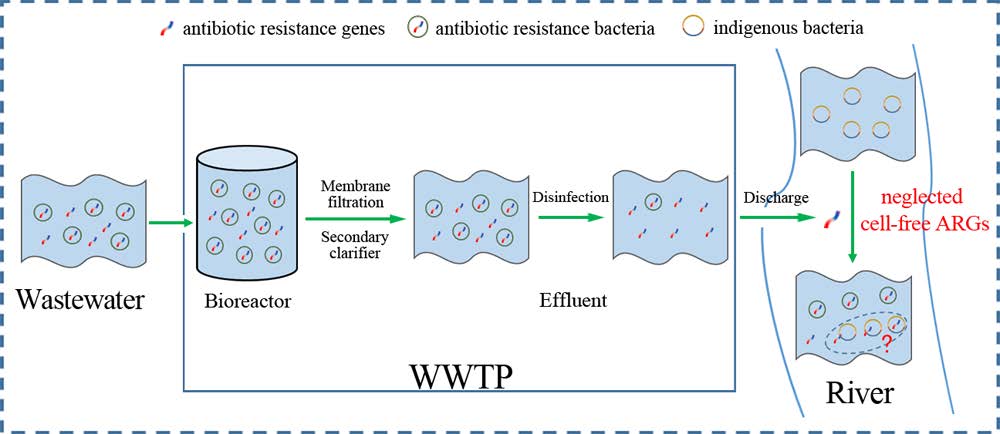Cell-free DNA: A Neglected Source for Antibiotic Resistance Genes Spreading from WWTPs
Yan Zhang, Aolin Li, Tianjiao Dai, Feifei Li, Hui Xie, Lujun Chen, Donghui Wen. 全文下载
Jiangsu Key Laboratory of Anaerobic Biotechnology, School of Environmental and Civil Engineering, Jiangnan University, 214122 Wuxi, PR China
School of Environment, Tsinghua University, Beijing 100084, China
College of Environmental Sciences and Engineering, Peking University, Beijing 100871, China
School of Water Resource and Environment, China University of Geosciences, Beijing, 100083, China
Zhejiang Provincial Key Laboratory of Water Science and Technology, Department of Environmental Technology and Ecology,Yangtze Delta Region Institute of Tsinghua University, Zhejiang Jiaxing 314050, China
Cell-associated ARGs in wastewater treatment plants (WWTPs) has been concerned, however, cell-free ARGs in WWTPs was rarely studied. In this study, the abundances of four representative ARGs, sulII, tetC, blaPSE‑1,and ermB, in a large municipal WWTP were investigated in both cell-associated and cell-free fractions. Cell-associated ARGs was the dominant ARGs fraction in the raw wastewater.After biological treatment, sludge settling, membrane filtration,and disinfection, cell-associated ARGs were substantially reduced, though the ratios of ARG/16S rRNA gene were increased with disinfection. Cell-free ARGs persisted in the WWTP with a removal of 0.36 log to 2.68 logs, which was much lower than the removal of cell-associated ARGs (3.21 logs to 4.14 logs). Therefore, the abundance ratio of cell-free ARGs to cell-associated ARGs increased from 0.04−1.59% to 2.00−1895.08% along the treatment processes. After 25-day-storage, cell-free ARGs in both biological effluent and disinfection effluent increased by 0.14 log to 1.99 logs and 0.12 log to 1.77 logs respectively, reflecting the persistence and low decay rate of cell-free ARGs in the discharge water. Therefore, cell-free ARGs might be a kind of important but previously neglected pollutant from WWTPs, which added potential risks to the effluent receiving environments.

Environmental Science & Technology
10.1021/acs.est.7b04283
2018
52, 248−257
